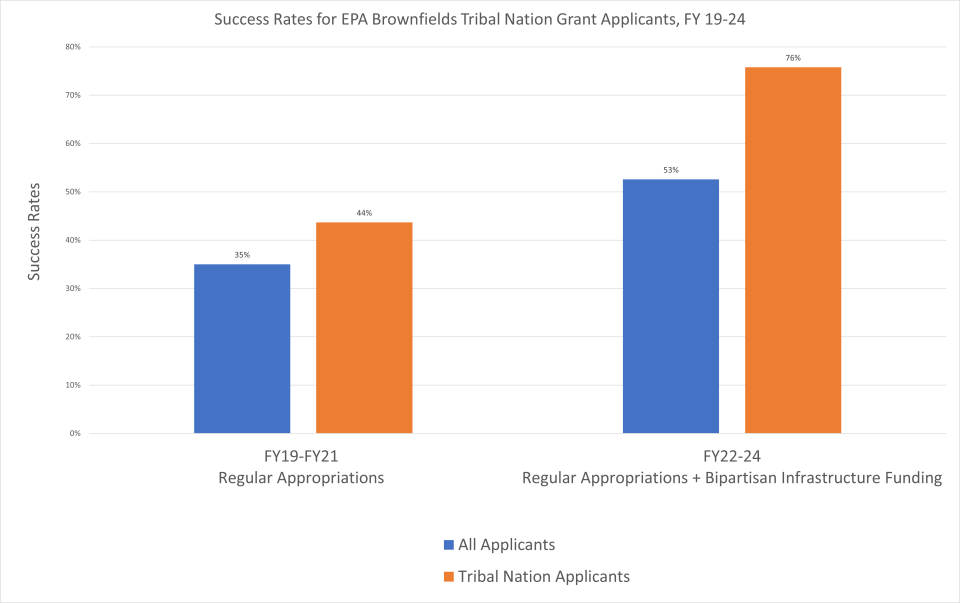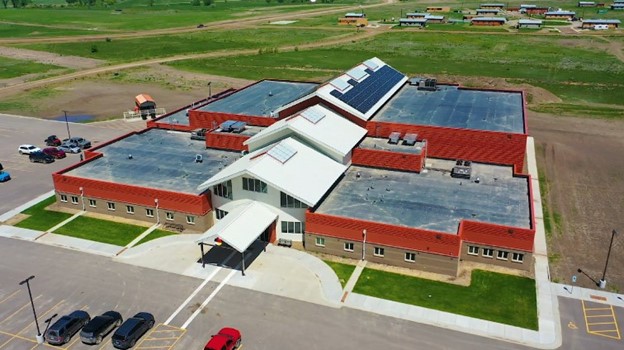Brownfields Reuse in Tribal Nations
Tribal Nations face common challenges when trying to find resources to address their brownfield sites, such as:
- Reacquiring contaminated lands
- Staff turnover and capacity.
- Limited resources to invest in and mange brownfield assessment, remediation and redevelopment activities.
- Need for consistent funding streams to support program implementation
Fortunately, many Tribal Nations have built the partnerships and capacity they need to conduct inventories, manage their own response programs and attract investment for brownfields reuse.
Additionally, EPA provides several free brownfields technical assistance resources that help address these challenges in Tribal communities, including:
- Targeted brownfields assessments - helps communities understand potential contamination at a brownfield site and plan for cleanup and redevelopment, at no cost to communities.
- Tribal technical assistance - address brownfield sites and increase their understanding and involvement in brownfields cleanup, revitalization and reuse at no cost to the Tribe.
- 128(a) Technical Assistance Grants - funds available to Section 128(a) cooperative agreement recipients so that they may provide technical assistance to small communities, Indian Tribes, rural areas or disadvantaged areas.
- Land Revitalization technical assistance determines which types of brownfield site reuses are feasible, given local conditions, infrastructure availability, community site design preferences and funding or financing resources. Provided at no cost to communities.
Success Rates Among Brownfields Multipurpose, Assessment, Revolving Loan Fund and Cleanup Grant Applicants

Success rates for Tribal applicants who apply for and are awarded an EPA's Brownfield Grant exceed the success rates from all applicants.
With the recent funding boost available through the Bipartisan Infrastructure Law, Brownfields Grant applicants from Tribal Nations were selected for award at a 23% higher rate than applicants overall. This is great news for Tribal nations grant applicants!
Examples of Brownfields Projects in Tribal Nations
Fort Peck Assiniboine and Sioux Tribes, Poplar, Montana

The Fort Peck Wellness Center, located in Poplar, Montana (population 773), is an effort that began in 2001. Local high school students worked with the Harvard Medical School and began studying the underlying issues causing a disparity in life expectancy among members of the Fort Peck Tribes. The average life expectancy in 2018 of an individual living on the Fort Peck Reservation is 59 years, compared to 78.5 years for the state of Montana and nationwide. In the years after the study, a small wellness center was created in Poplar and school-based programs provided children with health care services. The community began to outgrow the original wellness center. In 2019, the Fort Peck Tribe utilized funding from the Section 128(a) Response Program funding to conduct an environmental assessment on a vacant property. The assessment determined that no cleanup was required. In 2021, the new 50,000-square-foot facility replaced the smaller center and includes a healthcare clinic with medical, dental and therapy rooms. A pool, gym and workout equipment encourage physical fitness, while cultural arts, education and dance programs foster tribal traditions. The center was designed to promote health through every stage of life, providing services for healthcare, physical fitness, childcare and cultural arts and education.
